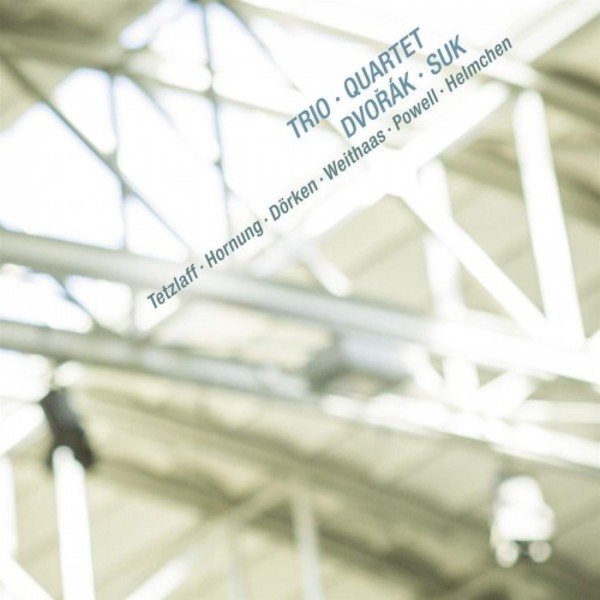
Dvorak - Piano Trio no.2; Suk - Piano Quartet
£13.25
In stock - available for despatch within 1 working day
Despatch Information
This despatch estimate is based on information from both our own stock and the UK supplier's stock.
If ordering multiple items, we will aim to send everything together so the longest despatch estimate will apply to the complete order.
If you would rather receive certain items more quickly, please place them on a separate order.
If any unexpected delays occur, we will keep you informed of progress via email and not allow other items on the order to be held up.
If you would prefer to receive everything together regardless of any delay, please let us know via email.
Pre-orders will be despatched as close as possible to the release date.
Label: C-AVI
Cat No: AVI8553404
Format: CD
Number of Discs: 1
Genre: Chamber
Release Date: 14th September 2018
Contents
Artists
Christian Tetzlaff (violin)Maximilian Hornung (cello)
Kiveli Dorken (piano)
Antje Weithaas (violin)
Vicki Powell (viola)
Martin Helmchen (piano)
Works
Piano Trio no.2 in G minor, op.26Piano Quartet in A minor, op.1
Artists
Christian Tetzlaff (violin)Maximilian Hornung (cello)
Kiveli Dorken (piano)
Antje Weithaas (violin)
Vicki Powell (viola)
Martin Helmchen (piano)
About
In 1876, DvořŠk composed the Trio in G minor, op.26, in a mere 16 days. Certain traits in this trio already seem to reveal DvořŠkís profound affinity with Brahms on an instinctive level. Gradually emerging from a series of brief motifs, the first movementís main theme is subjected to thematic treatment throughout. This movement is also the longest, lasting a total of twelve minutes. Its sombre mood does not yet reflect the true personal style of he who would soon write the Slavonic Dances. Notwithstanding, certain cello cantilenas in the slow movement and towards the end of the sombre, violent scherzo offer a foretaste of the great melodic gifts that DvořŠk would soon reveal to the world.
The composition Suk submitted for his final student exam is none other than the Piano Quartet in A Minor, op.1. The first movementís disarming impetuousness engulfs the listener like a shock wave, betraying not only the influence of Brahms, the true doyen of Late Romantic chamber music, but also that of DvořŠk, his own teacher. More significantly, however, a personal style already becomes noticeable in this work. The energetic introductory movement is followed by a clear contrast: a muted, nocturne-like, melodically intense Adagio that sets in with a warm cello cantilena. The second movementís expressive middle section exudes a fairy-tale-like atmosphere, similar to the one in the incidental music that Suk would later compose for the play Raduz and Mahulena. The final movement begins with a march-like main theme that is alternated with contrasting episodes, thus giving the general structural impression of a rondo...
Error on this page? Let us know here
Need more information on this product? Click here